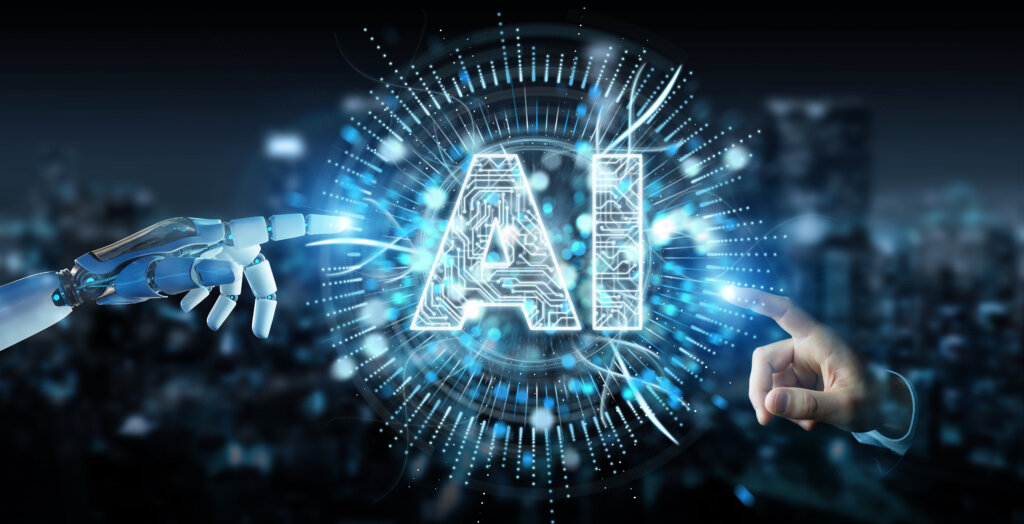
Navigating the Complex Landscape of AI, Language, and Bias
Filed Under: Artificial Intelligence (AI)
Sergio Patiño
Senior Vice President, Operations
At the recent AWS re:Invent, the spotlight was firmly on Generative AI, an area teeming with innovation and potential. One theme that particularly struck a chord with me was the crucial role of natural language in driving advancements in AI technologies, especially in Large Language Models (LLMs). These models, powered by the complexities of human language, underscore the significance of linguistic nuances in AI development. As I traveled back to (sweet home ♫) Chicago, my thoughts turned to the unique influence of my own ethnic heritage and native Spanish language. Reflecting on this, I recognized how deeply personal our interaction with language is and how it shapes our worldview. For instance, the use of diminutives like ‘ita’ or ‘ito’ (pequeño) in Spanish, which can tweak a noun into something endearingly small or adorable, exemplifies language’s transformative impact. This made me appreciate the immense power and subtlety of language, a fundamental tool that LLMs must effectively capture and interpret to truly resonate with users across diverse cultural landscapes.
Such a realization, however, also adds a unique and invaluable dimension to the ongoing discourse surrounding AI, highlighting critical aspects of bias and the richness of linguistic diversity. In the rapidly evolving world of artificial intelligence (AI), the intersection of language and bias presents unique challenges. As AI continues to permeate various aspects of our lives, understanding and addressing these challenges is crucial for creating inclusive and equitable technologies.
The Intricacies of Language and Bias in AI
In the field of natural language processing (NLP), AI reflects the rich diversity and complexity of human languages. Each language’s unique structure and rules, offers a distinct perspective. For instance, many languages, such as Spanish or French, use grammatical gender. This aspect of language structure reflectscultural heritage and an area where AI might encounter challenges in interpretation and application.
The evolution of language and its usage also plays a role in how AI is developed and trained. In some languages, there is a growing interest in exploring more inclusive forms of expression. For example, in French, there is a movement towards incorporating inclusive writing practices, which seek a balance between traditional grammatical rules and contemporary efforts towards gender inclusivity. These efforts include experimenting with neutral forms and blended masculine and feminine endings. Such linguistic developments demonstrate the dynamic nature of languages and the ongoing dialogue within communities about how their language is used and will evolve.
In the realm of AI, these nuances present both challenges and opportunities. They illustrate the need for AI systems to be adaptable and sensitive to the linguistic and cultural contexts they operate within. As AI continues to develop, engaging with these linguistic diversities thoughtfully and respectfully is increasingly important in ensuring that AI technologies are as inclusive and representative as possible.
AI’s Role in Reinforcing or Mitigating Bias
The role of AI in either reinforcing or mitigating bias is a critical aspect of its training and deployment. AI models, particularly those developed from language data, often inherit biases present in their training materials. For example, a recruitment tool developed by a notable company was found to exhibit bias against female applicants. This issue stemmed from the model being trained on a dataset predominantly composed of male-submitted resumes over a decade, reflecting the gender imbalance in the tech industry. This scenario underscores the need for a human element in AI development – not only to identify and correct such biases but also to learn from these instances and iteratively improve AI systems.

Efforts Towards Responsible AI
Amid these challenges, initiatives like AWS’s Responsible AI are playing a pivotal role. These types of approaches emphasize a people-centric perspective, prioritizing education, science, and customer needs across the AI lifecycle. Key dimensions such as fairness, explainability, privacy, security, robustness, governance, and transparency are at the forefront of these efforts.
As we navigate the complexities of AI, language, and bias, it’s crucial to recognize the immense potential of AI in supporting diversity, equity, and inclusion (DEI) initiatives. AI-driven tools can identify and mitigate biases within organizations, particularly in recruitment and talent management. The use of AI in language translation and accessibility features also opens doors for inclusive interactions in diverse settings.
The journey towards responsible AI, by companies, like C+R, shows commitment to these challenges. By prioritizing responsible AI development, deployment (and use), we can leverage technology to support a more equitable and inclusive world. The path forward involves refining AI models, embracing diverse perspectives, and adhering to ethical standards, using AI as a powerful tool in our quest for greater inclusivity, equity, and representation.
Conclusion
Lastly, the significance of understanding and addressing biases in AI cannot be overstated, especially in the context of business applications such as aided analysis, storytelling, and enhancing efficiencies. Recognizing and mitigating biases in AI systems is crucial for ensuring that these tools provide accurate, fair, and reliable insights, which are essential for informed decision-making by companies and effective, relevant communications to target markets. The integration of AI in these areas promises not only to streamline processes but also to enrich the way businesses understand and interact with their data and audiences.
Therefore, it’s imperative for businesses to engage strong researchers and experts who can work in tandem with these AI tools. Such collaboration is key to harnessing the full potential of AI, ensuring that it serves as a powerful ally in the pursuit of business innovation, strategic storytelling, and operational excellence. As we continue to advance in the digital age, the synergy between human expertise and AI capabilities will be a defining factor in the success and ethical responsibility of business enterprises.

